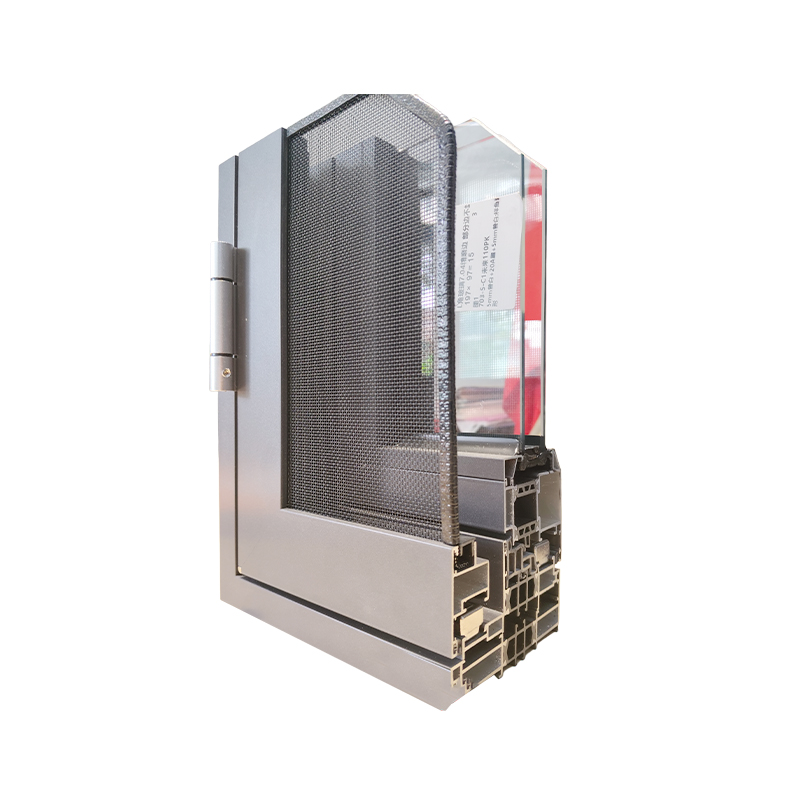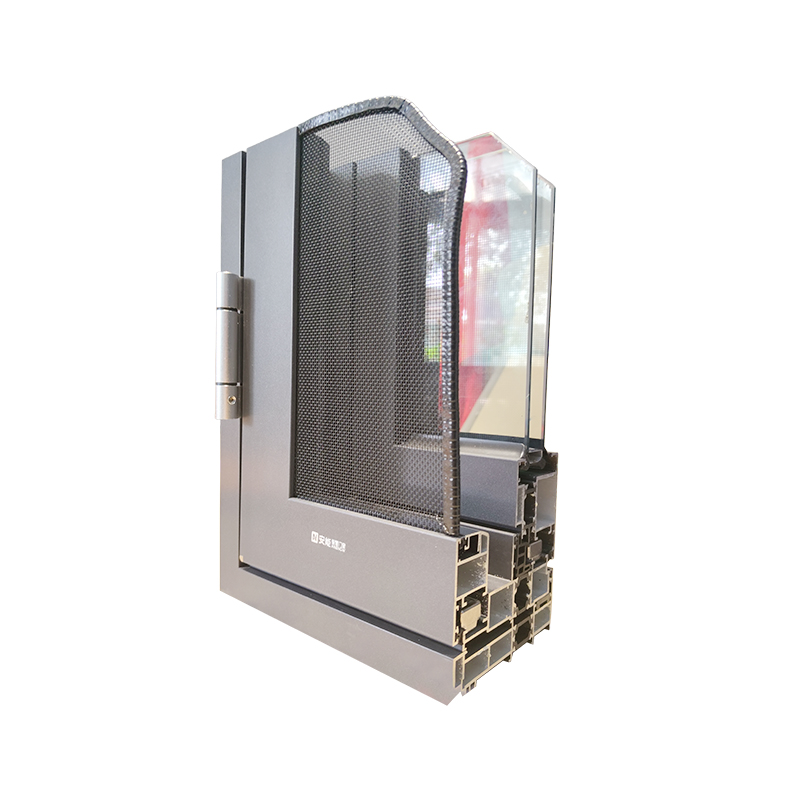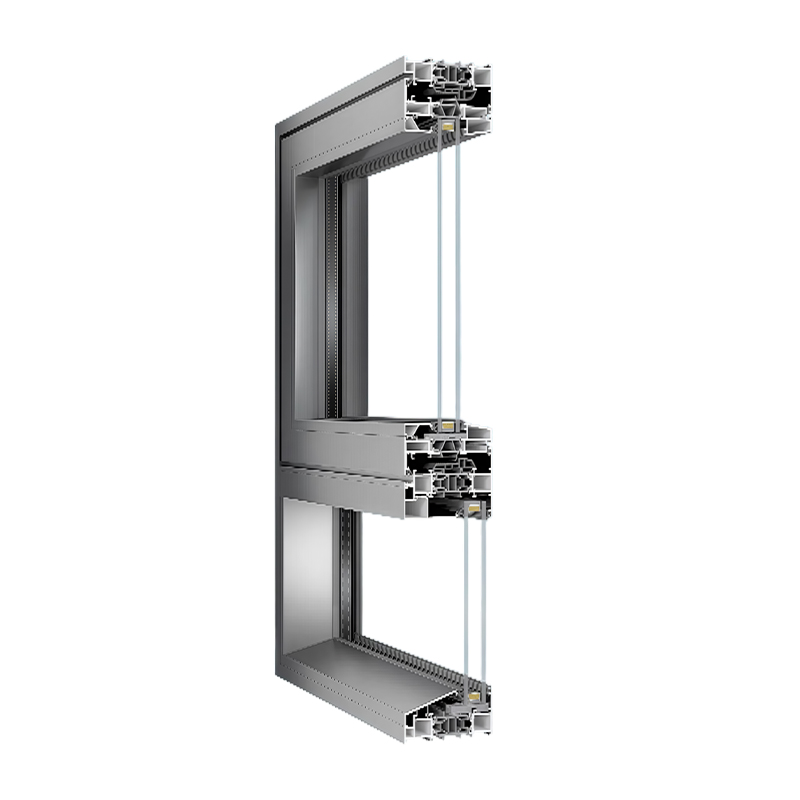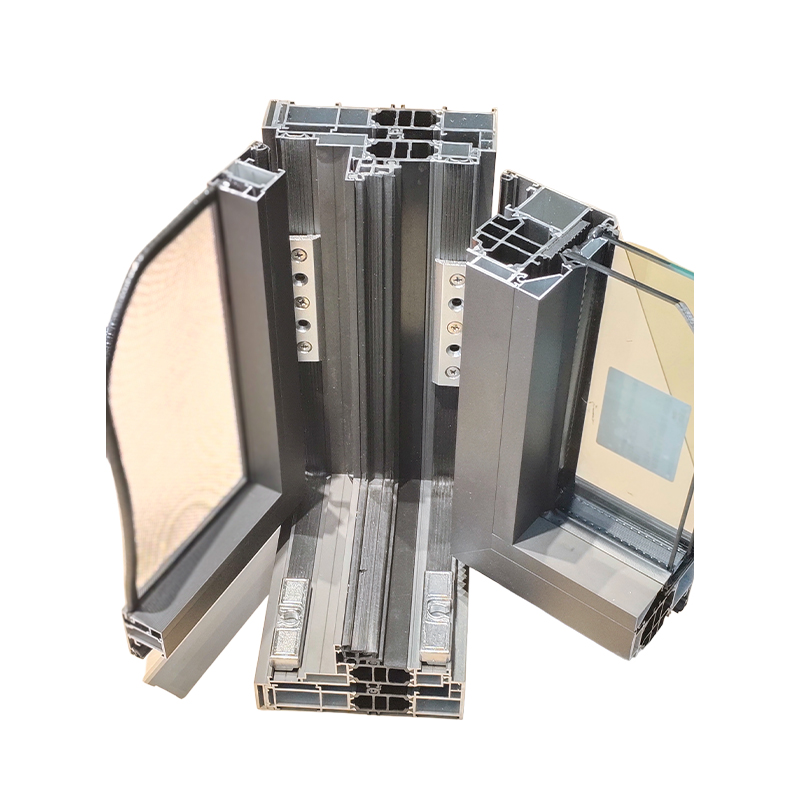Can tilt-and-turn windows flexibly switch to meet the needs of different seasons and usage scenarios?
Release Time : 2025-10-04
In modern living environments, windows have long transcended simple functions of providing light and views, becoming crucial systems for regulating indoor microclimates, improving living quality, and ensuring safety and comfort. Traditional casement or sliding windows, despite their simple structure, often have numerous limitations in ventilation control, safety, and space utilization. Tilt-and-turn windows, particularly high-end models with inward-opening and inward-tilting designs, are redefining expectations of windows with their exceptional flexibility and intelligent features. Their core advantage lies in their ability to flexibly switch opening modes, precisely adapting to different seasons, weather conditions, and lifestyle scenarios. This truly enables "one window for multiple uses," ensuring residents enjoy ideal ventilation and comfort throughout the seasons and throughout daily life.
The most distinctive feature of tilt-and-turn windows is their dual-mode opening mechanism: inward-opening and inward-tilting. These two modes are not simply mechanical changes, but are meticulously designed to address diverse usage needs. In spring and summer, when wide-open ventilation is essential, users can fully open the windows inward, creating a wide-open passageway for fresh air to flow freely in, accelerating indoor-outdoor air exchange and effectively reducing the feeling of stuffiness. This fully open position is particularly suitable for early morning or evening air freshness, and can also be used for temporary transportation of items or emergency evacuations, making it a versatile and practical option.
In more everyday situations, the inward tilting mode of tilt-and-turn windows demonstrates its unique value. When the weather is unpredictable, with a drizzle outside or strong winds outside, opening traditional outward-opening windows can easily cause rainwater to flow back or strong winds to blow directly into the room, affecting the indoor environment. The inward tilting mode, however, uses precise hardware control to tilt the top of the window sash outward while the bottom is firmly fixed to the window frame, creating a structure that is ventilated from above and sealed from below. This design cleverly utilizes aerodynamic principles, allowing outdoor air to enter from above and diffuse along the ceiling, avoiding direct airflow onto the body. At the same time, rainwater naturally slides out of the window due to gravity, preventing it from seeping into the room. Whether it's the rainy rainy season or winter nights when constant ventilation is needed but cold winds are a concern, the inward tilt mode ensures the ideal "airflow without rain, airflow without freezing."
This flexible switching capability also ensures a balance between safety and cleanliness. In high-rise residential buildings, outward-opening windows pose a risk of falling from heights, especially when children climb on them. Inward-opening, inward-tilting windows, on the other hand, operate entirely from within the room, and the opening angle in the inward tilt position is strictly limited, effectively preventing accidents. Furthermore, when cleaning the exterior glass, users simply switch the window sash to inward opening mode, allowing the entire sash to be pulled back indoors. Standing on the floor, they can safely and easily clean every inch of the glass, eliminating the need to lean out of the window or use specialized cleaning equipment. This significantly improves convenience and safety.
In terms of energy efficiency, the flexible opening method of tilt-and-turn windows also facilitates precise control of the indoor environment. In cold winter, the inward tilt can be fine-tuned to achieve small, continuous air exchanges, avoiding the sudden heat loss caused by opening the windows all at once. In hot summer, the inward opening mode can be combined with a sunshade system to guide cross-ventilation and reduce air conditioning loads. When the sash is closed, multiple sealing strips securely seal the sash, ensuring airtightness and thermal insulation, reducing energy waste.
Importantly, this flexibility comes without sacrificing aesthetics or spatial efficiency. When open, inward-opening and tilting windows occupy no external space, avoiding interference with exterior wall decoration, air conditioner units, or neighboring windows. Indoors, the inward opening of the sash does not interfere with curtains, furniture, or traffic paths, making them ideal for compact modern homes.
In summary, tilt-and-turn windows, by freely switching between inward opening and tilting modes, achieve versatile functionality and intelligent use. More than just a window, they are intelligent interfaces that dynamically adjust the indoor environment, providing the most appropriate ventilation solution based on seasonal changes, weather conditions, and lifestyle needs. Choosing such a window means choosing a smarter, safer and more comfortable way of living, making your home an ideal harbor where you can move freely and enjoy a pleasant environment all year round.
The most distinctive feature of tilt-and-turn windows is their dual-mode opening mechanism: inward-opening and inward-tilting. These two modes are not simply mechanical changes, but are meticulously designed to address diverse usage needs. In spring and summer, when wide-open ventilation is essential, users can fully open the windows inward, creating a wide-open passageway for fresh air to flow freely in, accelerating indoor-outdoor air exchange and effectively reducing the feeling of stuffiness. This fully open position is particularly suitable for early morning or evening air freshness, and can also be used for temporary transportation of items or emergency evacuations, making it a versatile and practical option.
In more everyday situations, the inward tilting mode of tilt-and-turn windows demonstrates its unique value. When the weather is unpredictable, with a drizzle outside or strong winds outside, opening traditional outward-opening windows can easily cause rainwater to flow back or strong winds to blow directly into the room, affecting the indoor environment. The inward tilting mode, however, uses precise hardware control to tilt the top of the window sash outward while the bottom is firmly fixed to the window frame, creating a structure that is ventilated from above and sealed from below. This design cleverly utilizes aerodynamic principles, allowing outdoor air to enter from above and diffuse along the ceiling, avoiding direct airflow onto the body. At the same time, rainwater naturally slides out of the window due to gravity, preventing it from seeping into the room. Whether it's the rainy rainy season or winter nights when constant ventilation is needed but cold winds are a concern, the inward tilt mode ensures the ideal "airflow without rain, airflow without freezing."
This flexible switching capability also ensures a balance between safety and cleanliness. In high-rise residential buildings, outward-opening windows pose a risk of falling from heights, especially when children climb on them. Inward-opening, inward-tilting windows, on the other hand, operate entirely from within the room, and the opening angle in the inward tilt position is strictly limited, effectively preventing accidents. Furthermore, when cleaning the exterior glass, users simply switch the window sash to inward opening mode, allowing the entire sash to be pulled back indoors. Standing on the floor, they can safely and easily clean every inch of the glass, eliminating the need to lean out of the window or use specialized cleaning equipment. This significantly improves convenience and safety.
In terms of energy efficiency, the flexible opening method of tilt-and-turn windows also facilitates precise control of the indoor environment. In cold winter, the inward tilt can be fine-tuned to achieve small, continuous air exchanges, avoiding the sudden heat loss caused by opening the windows all at once. In hot summer, the inward opening mode can be combined with a sunshade system to guide cross-ventilation and reduce air conditioning loads. When the sash is closed, multiple sealing strips securely seal the sash, ensuring airtightness and thermal insulation, reducing energy waste.
Importantly, this flexibility comes without sacrificing aesthetics or spatial efficiency. When open, inward-opening and tilting windows occupy no external space, avoiding interference with exterior wall decoration, air conditioner units, or neighboring windows. Indoors, the inward opening of the sash does not interfere with curtains, furniture, or traffic paths, making them ideal for compact modern homes.
In summary, tilt-and-turn windows, by freely switching between inward opening and tilting modes, achieve versatile functionality and intelligent use. More than just a window, they are intelligent interfaces that dynamically adjust the indoor environment, providing the most appropriate ventilation solution based on seasonal changes, weather conditions, and lifestyle needs. Choosing such a window means choosing a smarter, safer and more comfortable way of living, making your home an ideal harbor where you can move freely and enjoy a pleasant environment all year round.







